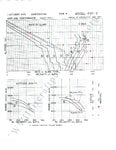P-39 Expert
Non-Expert
Actual fly-off tests between A6Ms and P-39s proved that anything above 15,000 feet and the P-39 is outclassed by the Zero. Trials using a P-39D against a Zero 21 in August 1942, admittedly an earlier model than the 'N although the 'D model was what was on the frontline at the time, shows that anything above 12,500 feet and it is left behind. During this particular fly-off, the trial had to be called off because the P-39 was low on fuel, and that was during a trial fly-off under controlled conditions. During similar fly-offs with F4U, F4F, P-38 and P-51, no other aircraft ran out of fuel. Actually a P-39D-1, at 7850lbs the heaviest of the 1942 P-39s. Could have easily weighed 7150lbs without redundant equipment and left the Zero behind. In continuous climb from SL they were actually equal up to 14500ft when the D-1 had to reduce power to 2600rpm as it had reached the 5 minute limit. By mid 1942 that was increased to 15 minutes. Even the D-1 was faster than the Zero at all altitudes. Zero did hold more fuel than the P-39.
The F6F however during later trials against a Zero 52 in 1944 proved that above 14,000 feet it was superior in every way, below that height up to 9,000 feet the Zero was faster, but between 9 and 14,000 ft the F6F gradually caught up. The F6F-5 model however was superior in speed to the Zero 52 at all altitudes. All P-39 models were faster than any Zero at all altitudes.
No comparison between the F6F and the P-39 as combat aircraft, to be honest. One is clearly superior to t'other, and their relevant combat histories prove that beyond doubt. See the attached comparison chart, and please note that the P-39N was out of production before the F6F got into combat.

